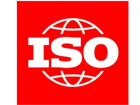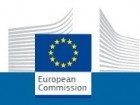- Do you know if the CE marking will serve as proof of third-party validation for all OSOs of the SORA methodology related to manufacturing (and maintenance?)
Regarding manufacturing, the CE Marking is a process to declare conformity with the AMC to validate the requirements stated in DR 2019/945, the CE Marking can be proposed as a proof of conformity of a specific(s) OSO(s) but it is up to the authority to accept it.
Related to maintenance, the CE marking forces the manufacturers to include maintenance instructions in the manual, but this does not cover the corresponding OSO.
- Is it only for Drone producers? or do these rules count for payload producers?
Drone’s manufacturers shall consider payload features in order to show compliance with some requirements of the regulation. However, from our point of view, payload’s producers should take into account the regulation to be aware of the mentioned requirements.
- Do you know if there is any requirement for certification related to the use of European Navigation Positioning Systems (EGNOS and/or Galileo)?
CE Marking has some requirements that may be fulfilled by a GNSS based on EGNOS/GPS/GALILEO/etc, but there are not any specific requirements regarding the certification of this kind of systems.
- What are the differences between the CE Marking and the Patent?
A Patent is a mean a company or individual has to protect an Intellectual Property. On the other hand, the CE marking guarantees that your product fulfils with the requirements established by the regulation as a safe product to be introduced in the E.U market, but is unrelated to Intellectual Property.
- Can manufacturer do CE marking on their own for class C0, 4, 5 6..?
Yes, for C0 and C4 is not needed a third party and CE Marking can be done by manufacturers. The same applies for C5 and C6, but since these classes do not have any working draft of a harmonised standard that proposes means of compliance to cover their requirements. From our point of view considering they are based on C3 requirements and taking into account they were introduced for the specific category is envisaged that the CE Marking process would need a third party for this aim.
- Is Alter a notified body?
ENAC has recently granted accreditation to Alter Technology to assess the conformity of specific categories of unmanned aircraft (the popular drones) as established in the Implementing Regulation (EU) 2019/945. Alter Technology became the first accredited body to carry out this activity in Spain and Europe. Read the complete new in Drones CE Lab.
- Taking into account the potential economic value concerning “delivery drone operations” in EU cities and urban areas, but also the high level of risk involved in said flights, do you think that probably most MS national aviation authorities will try to make these type of operations to fall with the Certified Category until the state of the technology allows to mitigate most of the risks (even if these can be subject and operate in the Specific category without any problem)? Or perhaps a new STS can be created for these operations?
We know the potential of delivery drone operations and from our point of view, several new STS will be created for this kind of operations. However, in the meantime, depending on the goods to be delivered, we consider that most of these cases will be considered as specific category activities and further requirements will be introduced in the near future.
- Will the CE markings for the different C-classes be different in form?
Depending on the class of drone, the available modules for the conformity assessment procedure will include, or not, they need the supervision of a Third-Party, such as a Notified Body.
- Are you able to perform all the tests required by the 4709 drafts?
ALTER TECHNOLOGY has developed all the necessary tests and documental assessment procedures in the last months to perform them in our facilities in accordance with the means of compliance stated in the prEN4709 standards.
- Would any new technology (such as LIDAR, GNSS, etc…) need to be part of the CE marking process? If “yes”, how are they included in the process? If “not”, how can we demonstrate that these new technologies work properly?
CE Marking has some requirements that may be fulfilled by a GNSS and/or LIDAR systems, but there are not any specific requirements regarding the certification of this kind of systems within DR 2019/945. This kind of technology, as occur with other electronic/electromechanical systems, has its own regulations or directives that cover their relevant requirements and their own conformity assessment procedures.
- Are these environmental tests mandatory for CE marking?
Not really, but they are highly recommended for systems operating in specific environmental conditions, such as extreme temperatures (hot or cold), saline environments, among others. Note that DR 2019/945 has some requirements in the different classes indicating that the UA shall be “safely controllable”, which should be assured in all the expected operating conditions.
- EU Declaration of Conformity for drones (UAS) which are under REG 2019/945 and 947 shall mention and include also RED and Machinery Directives?
In fact, DR 2019/945 includes both directives. Machinery Directive is necessary for a safety risk assessment for those risks that are not related to the safety of flight (see Article 4 of DR 2019/945) and RED ensures the protection of spectrum, electrical safety, and electromagnetic compatibility (EMC). RED is not directly mentioned in DR 2019/945, but it is applicable for UAS if they have any radio equipment module. Actually, RED is mentioned in prEN4709-002 as a part of the Direct Remote ID section requirements.
- How long a CE class marking process can take on average?
The conformity assessment procedure for CE Marking carried out by a Third Party, such as a Notified Body, can take in average between one or two months, but this depends on the preliminary assessment of the system carried out by our expert on the documentation provided by the manufacturer.
- What are the mandatory testings for self-certification & NB certification..?
The tests to be carried out for each drone class depend on the class requirements stated in DR 2019/945. A self-certification procedure depends on the selected module (also specified in the mentioned regulation). ALTER, as a future UAS Notified Body and based on its experience as Notified Body for other markets, has developed its testing methods covering the means of compliance established in the prEN4709 standards.
- Do you know all drone system requirements that the 4 prEN 4709 parts specify?
Yes, ALTER is part of the ASD-STAN D5WG8 and is aware of the specifications developed by the different subgroups.
- When can your accreditation of NB get approved?
Actually, it depends on the Spanish Accreditation Body (ENAC). We have already presented all the necessary documents.
- What if we have an older transformed drone from 2018 like a DJI, with a remote drone mechanism for instance, does it require CE marking because of this transformation?
In this case, it depends on the use that you are going to give to the modified drone. If you use it for private operations (not to commercialise the customised model) you do not need to mark your drone as a mandatory requirement, but you will have to check the limitations to fly it at the beginning of the next year 2021. Actually, we would need further information about this specific case to provide a more precise answer but, in general terms, that is what the regulation says.
- Alter Technology, first Notified Body in Europe accredited to certify drones - 9th February 2022
- Q&A – Declaration of Conformity and CE Marking - 4th November 2020
- NEW ISO STANDARD for Drones Released! - 29th January 2020



